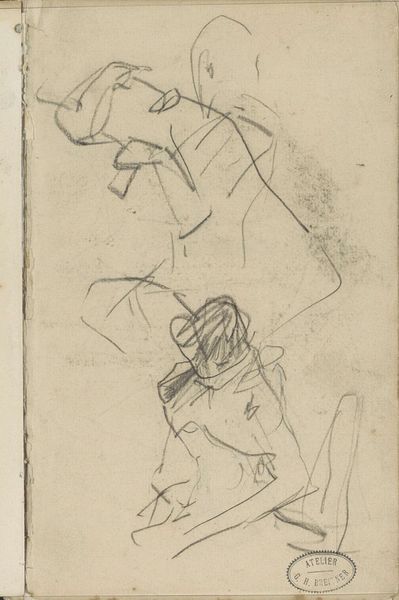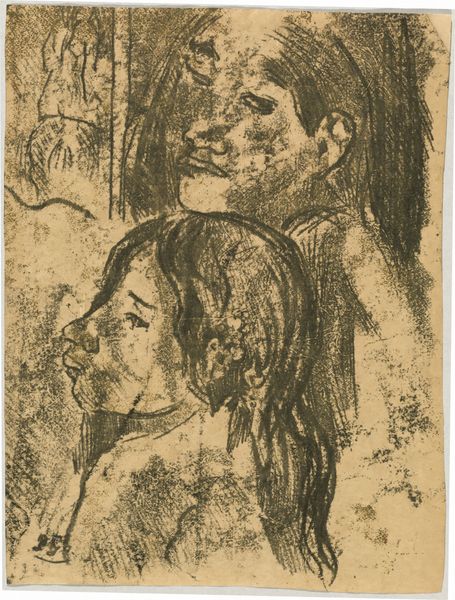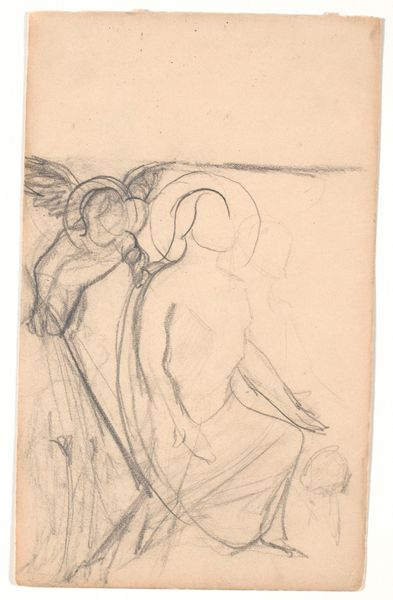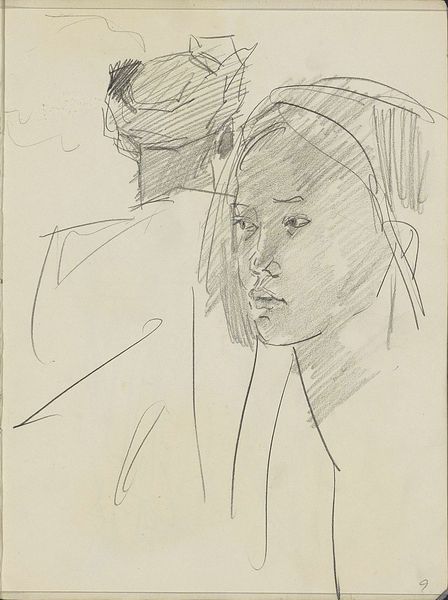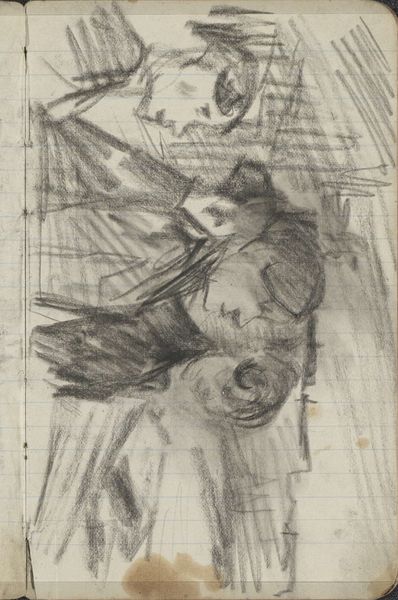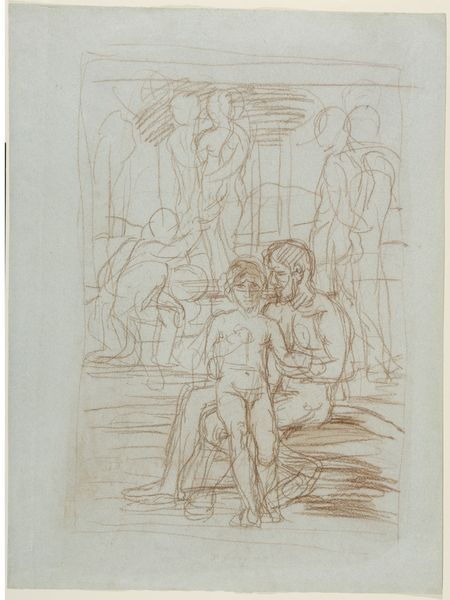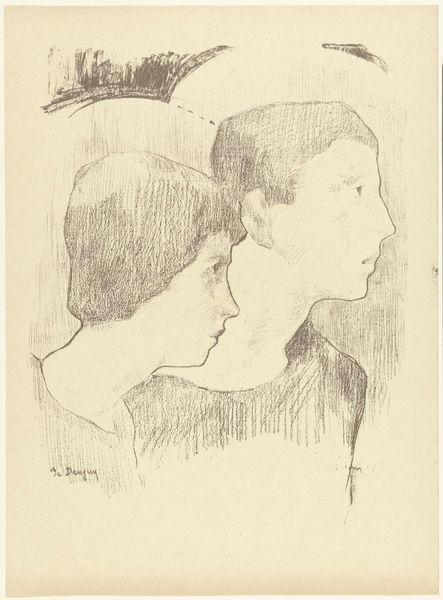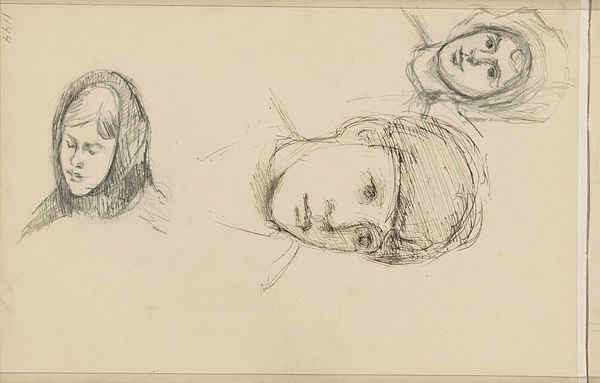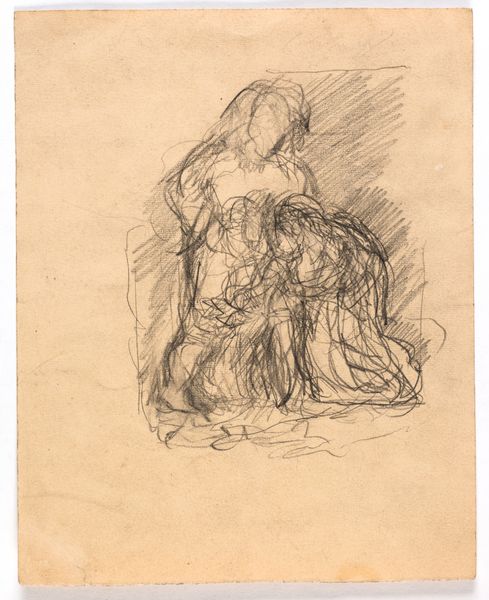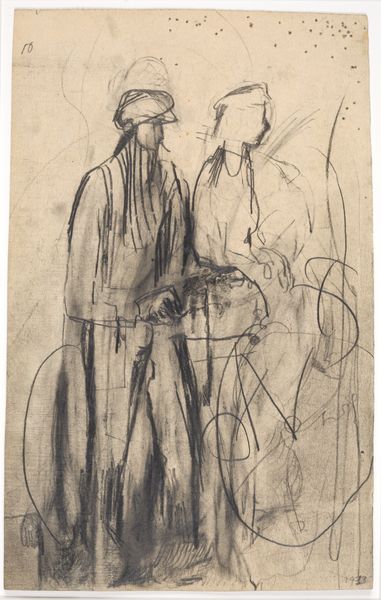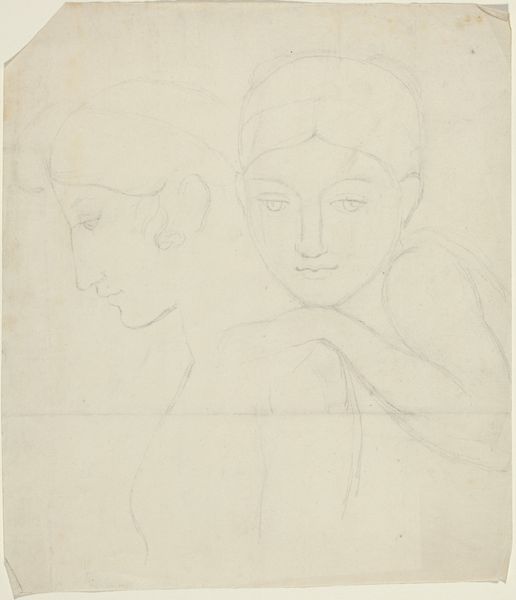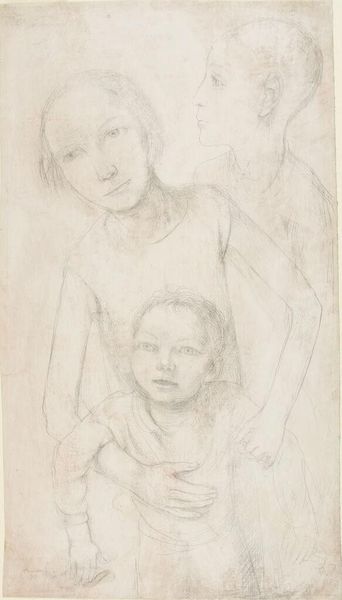![Two Marquesans [verso] by Paul Gauguin](/_next/image?url=https%3A%2F%2Fd2w8kbdekdi1gv.cloudfront.net%2FeyJidWNrZXQiOiAiYXJ0ZXJhLWltYWdlcy1idWNrZXQiLCAia2V5IjogImFydHdvcmtzLzU4YzczNTc5LTNlZDktNDk0Mi1hMWFjLTEyMjhlYTVkZGYwMC81OGM3MzU3OS0zZWQ5LTQ5NDItYTFhYy0xMjI4ZWE1ZGRmMDBfZnVsbC5qcGciLCAiZWRpdHMiOiB7InJlc2l6ZSI6IHsid2lkdGgiOiAxOTIwLCAiaGVpZ2h0IjogMTkyMCwgImZpdCI6ICJpbnNpZGUifX19&w=3840&q=75)
drawing, pencil
#
portrait
#
drawing
#
pencil sketch
#
figuration
#
pencil
#
portrait drawing
#
post-impressionism
Dimensions: sheet: 45.8 x 34.5 cm (18 1/16 x 13 9/16 in.)
Copyright: National Gallery of Art: CC0 1.0
Curator: Before us we have Paul Gauguin’s “Two Marquesans,” a pencil sketch likely dating from around 1902, during his time in the Marquesas Islands. What catches your eye? Editor: It’s a study in stillness, isn't it? A quiet intimacy. The graphite is so delicate; the two figures seem caught between breaths, like a fleeting memory on paper. It's vulnerable, somehow. Curator: The softness is intentional, I think. Gauguin, while often celebrated for his bold colors, possessed a real sensitivity in his drawings. This wasn’t meant for public consumption necessarily, but offers insight into his process. What do you make of the differing perspectives, the upper figure facing forward, the other in profile? Editor: It makes me think of seeing people on the periphery. How often do we really *see* someone versus glimpsing them in passing? One is offered directly to the viewer, the other is more demure, a whispered confidence. The flowers adorning the lower figure’s hair lend a touch of… bittersweet beauty? Knowing, of course, the context of his colonial gaze and interactions… Curator: That's key. Gauguin's vision of "primitive" cultures was romanticized and, yes, colonial. While he sought authenticity, he often projected his own desires and fantasies onto his subjects. It raises ethical questions that can’t be ignored when viewing his work, even something seemingly simple like this sketch. The sheet feels raw, immediate – revealing artistic intention but fraught cultural baggage. Editor: Exactly! There’s a real tension present, perhaps unintended, between the genuine connection he seems to seek and the undeniable power dynamic at play. Looking closely at the faces—there's something so individual in the rendering, yet the figures remain, in some way, archetypes. Is that fair to them, to him? Curator: It’s a perpetual push and pull with Gauguin. I appreciate your attention to these elements because ultimately engaging with them brings these obscured complexities to light and allow us a deeper perspective. Editor: It gives you a lot to consider, doesn’t it? This sketch. It reminds me that even in the most seemingly simple images, stories—complicated, challenging stories—reside.
Comments
No comments
Be the first to comment and join the conversation on the ultimate creative platform.
